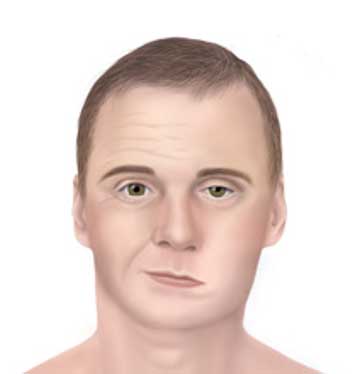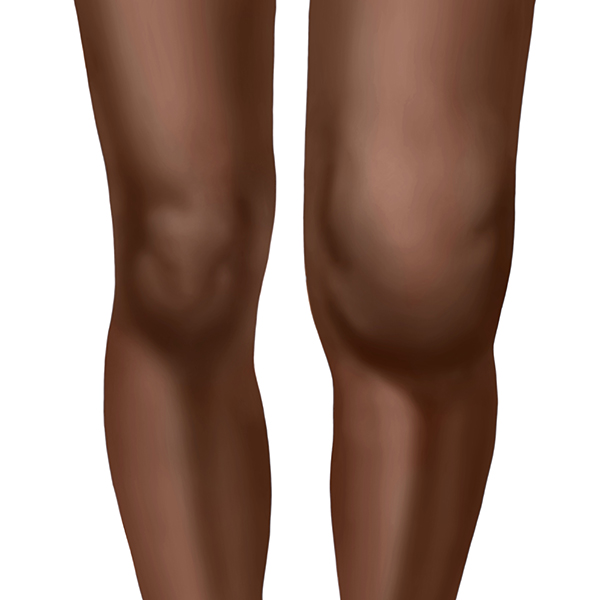These symptoms can occur three to 30 days after a tick bite:
Lyme carditis most typically presents as atrioventricular nodal block. Varying degrees of heart block can occur, which can progress to or fluctuate between complete heart block. Pericarditis and myocarditis may also occur. Symptoms may include:
An ECG does not need to be performed routinely on all patients with Lyme disease. However, an ECG should be performed urgently for any patient with suspected Lyme carditis.
Meningitis
Presentation of Lyme meningitis is similar to enteroviral and other aseptic meningitis. This may include:
The presence of the following may increase the likelihood of Lyme meningitis*:
Cranial Neuritis
Cranial neuritis usually involves the facial nerve (CN VII) and less often, the trigeminal (CN V), oculomotor and abducens (CN III, VI), and vestibulocochlear nerves (CN VIII). When the cranial nerves are affected, facial palsy can occur on one or both sides of the face.

Man with facial palsy.
Radiculoneuritis
This presentation is rare in children, but if present, may include:
*Robert A. Avery, Gary Frank, Joseph J. Glutting, Stephen C. Eppes; Prediction of Lyme Meningitis in Children From a Lyme Disease–Endemic Region: A Logistic-Regression Model Using History, Physical, and Laboratory Findings. Pediatrics January 2006; 117 (1): e1–e7. 10.1542/peds.2005-0955
Marked swelling primarily affecting large joints, most commonly the knee. This is the most common presentation of late Lyme disease in children. Predictors of Lyme arthritis include:
Lyme arthritis can be difficult to differentiate from septic arthritis. Predictors of septic arthritis may include

Although a two- to four-week course of antibiotics cures most cases of Lyme disease, patients sometimes report symptoms of pain, fatigue, or difficulty thinking that last for more than six months after they finish treatment.
It is not known why some patients experience these symptoms. Studies funded by the National Institutes of Health have found that long-term outcomes are no better for patients who received additional prolonged antibiotic treatment than for patients who received placebo treatments.